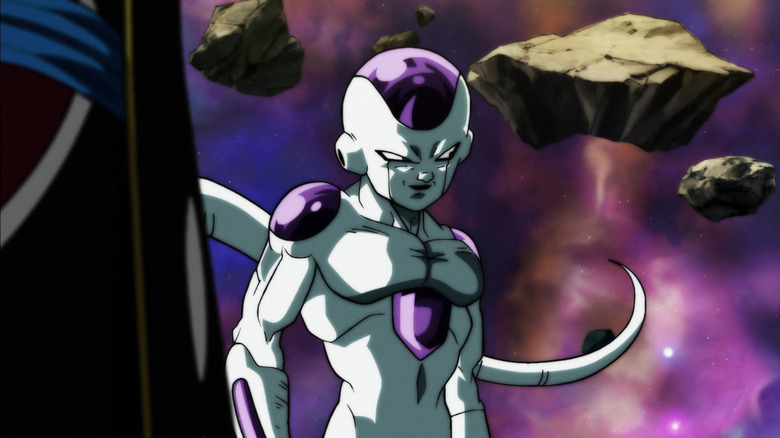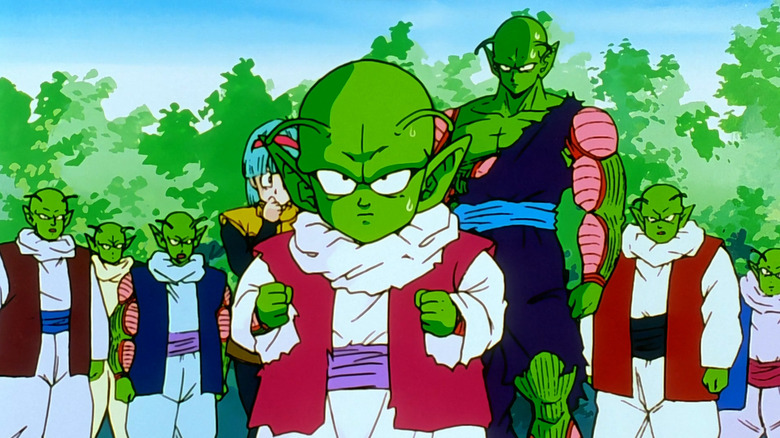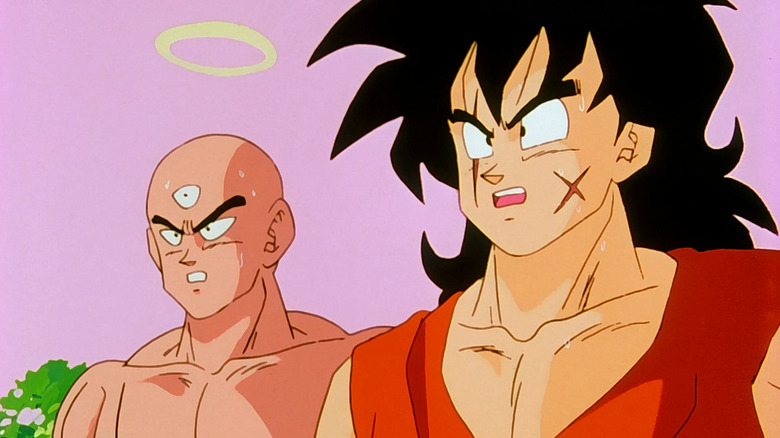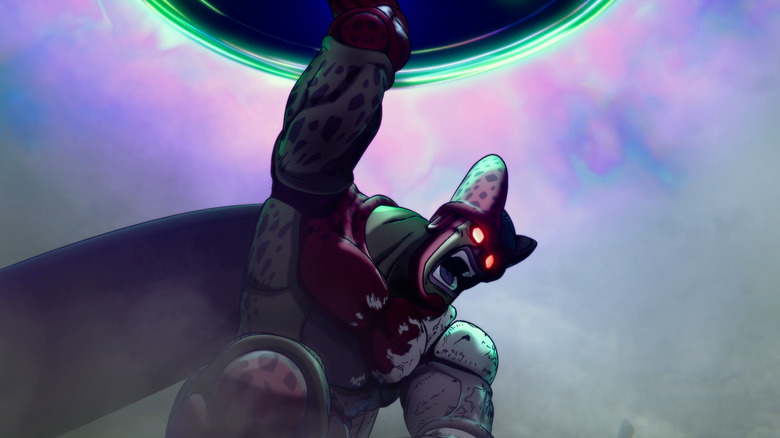Dragon Ball Keeps Resurrecting Dead Characters & It's Ruining The Franchise
"Dragon Ball" is one of the longest-running and most successful anime and manga franchises in the history of either medium. Tracing its history all the way back to the mid-1980s and crossing decades with various shows and movies along the way, Akira Toriyama's shonen series is one of the most recognizable in the world. However, there are some drawbacks that come with having such a long-running franchise. One of them is that, at a certain point, all you can do is repeat yourself. Worse still, sometimes the way that you repeat yourself takes all of the teeth out of your storytelling.
This is the problem that "Dragon Ball" has been suffering from for decades. Since the original series, characters have been dying, only to be revived later on by the magic of the Dragon Balls. Furthermore, characters are seen after their deaths in the show's afterlife, allowing them to continue to exist in the overall universe of the series. To top it off, even villains don't stay dead — after getting deservedly defeated, they're brought back over and over again.
Death is the biggest problem with "Dragon Ball." And "Dragon Ball" needs to implement some magical twist that will start making death matter again, because it's got a long way to go before fans will ever shed a tear at a character's death again.
Dragon Balls are the ultimate retcon tool
The broadness of the magic wishes granted by the Dragon Balls is the real problem here. For instance, when Piccolo (Toshio Furukawa/Christopher Sabat) or Frieza (Ryusei Nakao/Linda Young) killed countless people indiscriminately, including many of the show's heroes, all of the evil they had done could be completely overridden by the Dragon Balls.
This is the franchise's biggest problem, as it shows that no matter how bad things get, all of it can be reversed in an instant. Essentially, the deaths of main characters, side characters, and even random civilians in "Dragon Ball" can be retconned in a single episode. In fact, the wishes can be so broad that a character can wish for "everyone who died today" or "everyone killed since this conflict began" to be brought back.
The problems with this as a storytelling device are innumerable. For one thing, fans can never trust that a character will actually remain dead, no matter how tragic their fate was. Worse still, the show breaks its own rules again and again. Early on, viewers are told that characters can only come back from the dead once, but this changes with the discovery of other Dragon Balls.
Making things even goofier, King Kai (Joji Yanami/Sean Schemmel) warned the heroes early on that the Dragon Balls are only meant to be used once per century. That's a joke, now, considering there have been no real consequences for how often and how recklessly they've been used over the course of the franchise.
If Dragon Ball characters keep fighting in the afterlife, their deaths are meaningless
Even worse than bringing characters back from the dead, though, is the tendency for "Dragon Ball" to show those who have died living on in the afterlife, even cutting to them in the middle of a battle so that they can cheer Goku (Masako Nozawa/Schemmel) on. This isn't something that usually needs to be explained, but the point of a character dying is that we don't see them anymore.
This is one of the primary ways that art can emulate our fears. It's also why, in most stories, characters don't return from the dead. Of if they do, they do so very briefly. They say something poignant and fade away, or they smile at you from the afterlife, ala "Star Wars."
Probably the most blatant example of this is Seasons 6 and 7 of "Dragon Ball Z." We see Goku make the ultimate sacrifice in the battle against Cell (Norio Wakamoto/Dameon Clarke), preparing to pass the torch of Earth's greatest hero to Gohan (Nozawa/Stephanie Nadolny). After following Goku for so long, saying goodbye to the central character is a big moment for fans ... except he's instantly back in Season 7. Yes, rather than have the death be meaningful and long-lasting, the character just joins a fighting tournament in the afterlife, and that becomes the focus of the show. Never mind that there's no point in ghosts fighting each other in general since they're already dead: this popular recurring Dragon Ball story needs to die, as well, because there are no stakes to this kind of "Dragon Ball" tournament.
Not even the villains are allowed to stay dead
After all of this, though, we can at least expect the villains to stay dead, right? Well, unfortunately, no.
Not only is Frieza brought back from the dead by King Cold (Daisuke Gori/Michael Dobson) after being absolutely obliterated by Goku during the Namek saga, but Sorbet (Shiro Saito/Jeremy Schwartz) uses the Dragon Balls to bring him back as well, even after a second defeat. The franchise pulls the same stunt with Cell, the "Dragon Ball Z" big bad that follows Frieza. Though Cell was defeated by Gohan in Season 6 of the series, there turns out to inexplicably be another version of Cell that's been waiting in a lab to awaken and go on a rampage of his own. So, in "Dragon Ball Super: Super Hero," Gohan is battling Cell yet again.
Just one of these issues would be enough to sink a less successful franchise, but "Dragon Ball" continues to be popular despite the fact that almost nothing that happens in the series matters in the long run. If Akira Toriyama or the fans want another character to return, they will find a way to bring them back, no matter how they died.
While we probably can't expect that the newest installment in the franchise, the cutesy "Dragon Ball Daima," will be the series to rectify this, it is something that the team behind the series should eventually think about exploring, even occasionally. Even in entertainment, death is not to be taken lightly, and it's time that "Dragon Ball" makes it stick.



